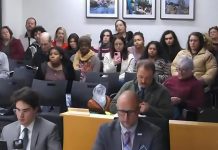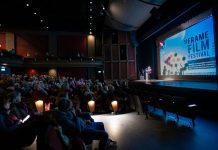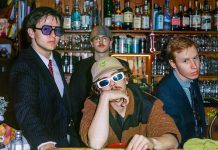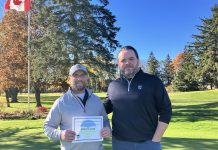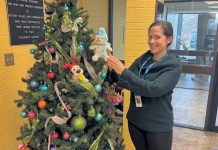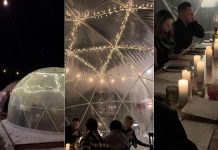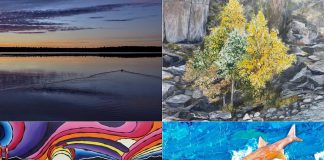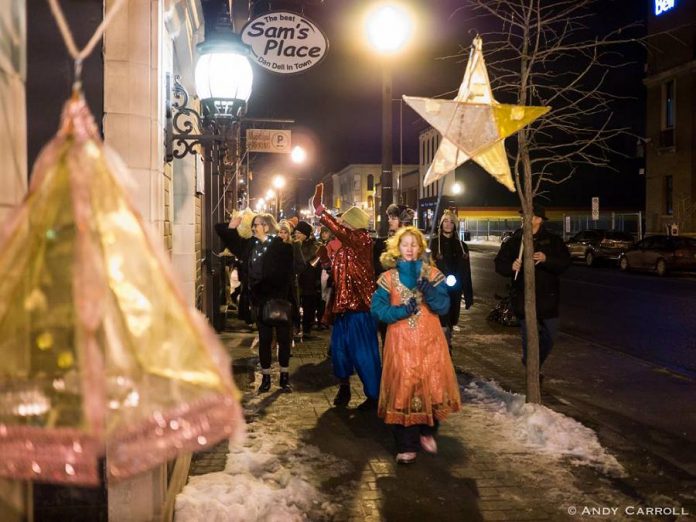
On Friday (December 21), winter is officially here with the arrival of the winter solstice, also known as the hibernal solstice or midwinter. While you may not relish the cold winter months ahead, you will want to welcome the “return of the light” — after Friday, the nights get shorter and the days start getting longer again.
In downtown Peterborough, there’s a special event to do just that. Artist collective Atelier Ludmila is presenting “Granny and The Starchild Winter Solstice Celebration” on Friday from 6 to 7 p.m., with a drummer-led lantern parade and five special stages with dancers, musicians, and beautiful puppets performing in and around Peterborough Square.
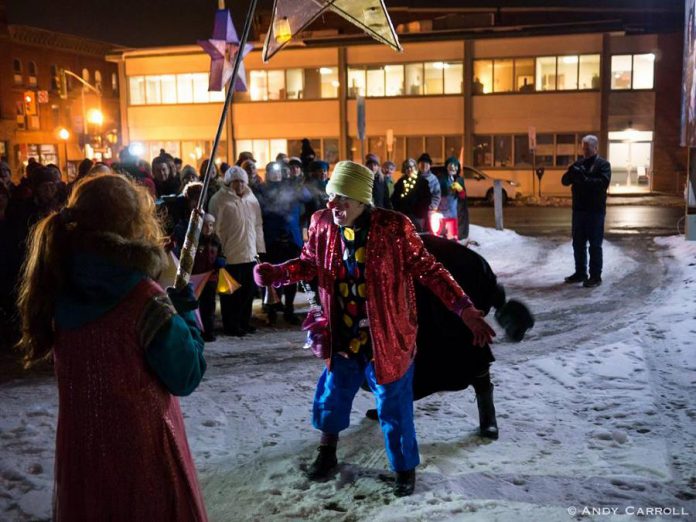
Originally established as the “Light Hunters’ Promenade” for the 2016 winter solstice, the event is hosted by Laurel Paluck and Annie Jaeger and features Granny and The Starchild (Hilary Wear and Charlie Watson), Bear (Conner Clarkin), Deers (Kate Brennan, Audrey Eyers, Sarah Rudnicki, Wes Ryan, and Mariya Yagnyukova), Lady Caw Caw and The Bro Crows (Janette Platana and Old Men Dancing), Foxes (Dreda Blow, Bradley Boyle, Mary-Kate Edwards, Chris Jardin, and Carolyn McCarthy), and Wolves (Naomi Duvall, Nathan Govier, June Govier, and Daniel Smith).
The event is directed by Laurel Paluck with choreography by Dreda Blow, Sarah Rudnicki, and Nathan Govier and live music performed by TASS drummers with David Bigg on sax and Taite Cullen on keyboard.
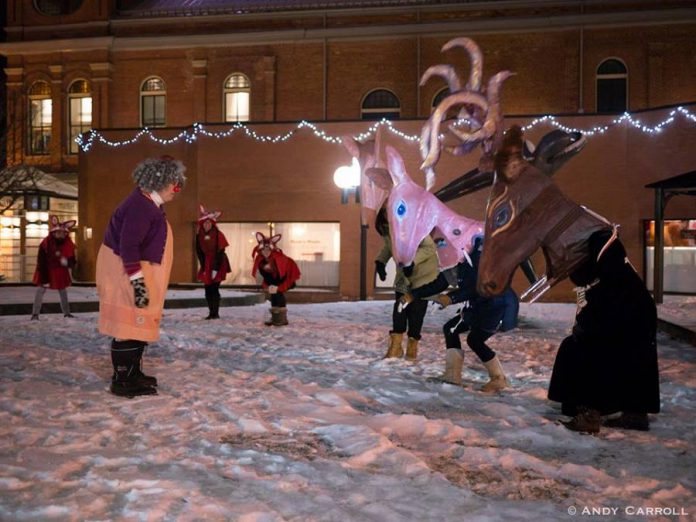
If you’d like to participate, gather in the alley behind Watson & Lou (383 Water St.) at 6 p.m. for the lantern parade. You can bring your own lanterns or, if you wish to sponsor the event, you can purchase an artist-made lantern for $100.
Led by Granny and The Starchild and the drummers, the parade will proceed along Water, Hunter, and George Streets, arriving at Peterborough Square (340 George St. N.) at around 6:30 p.m. for a indoors and outdoors magical tour of five special performances.
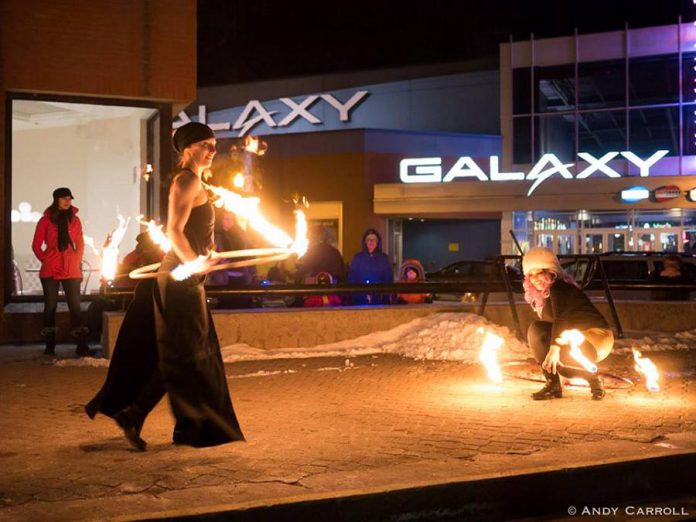
The cost to attend is by donation (suggested $10 per family or pay what you wish). Volunteers wearing red capes will accept donations at the beginning and end of the event.
Rain is in the forecast for Friday, so if it’s raining when the event is about to begin, go directly to Peterborough Square at 6 p.m.
What is the winter solstice?
On the winter solstice, the Earth’s northern hemisphere is tilted the furthest away from the sun, resulting in the longest night and shortest day of the year.
Because the axis of Earth is tilted by 23.5 degrees, the orientation of the northern and southern hemispheres changes as the Earth orbits the Sun, resulting in the change of seasons.
Although the winter solstice happens at the same moment for everyone around the world (5:23 p.m. EST), the length of the night depends on your location between the equator and the north pole. At the equator, there’ll be 12 hours of darkness. In the Kawarthas, we’ll get 15 hours and 9 minutes of darkness. At the Arctic circle, there will be a full 24 hours of darkness.
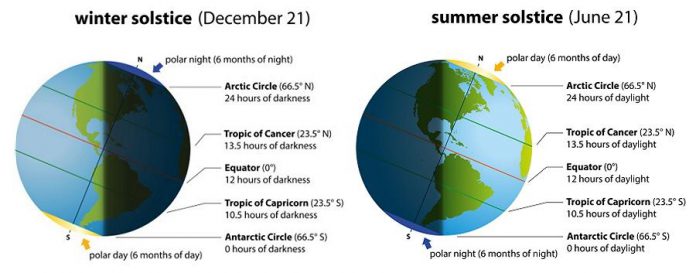
After the winter solstice, the northern hemisphere begins to tilt more towards the sun. On the summer solstice (Friday, June 21, 2019), the northern hemisphere will be tilted the closest to the sun, resulting in the longest day and shortest night of the year. In the Kawarthas, that means we’ll get 15 hours and 32 minutes of daylight.
Humans have been tracking the annual progress of the sun for thousands of years. Ancient peoples noticed regular patterns in the sun’s path across the sky, the amount of daylight and night, and the changing location of the sunrise and sunset. Monuments like Stonehenge in England and Machu Picchu in Peru were built for this purpose.
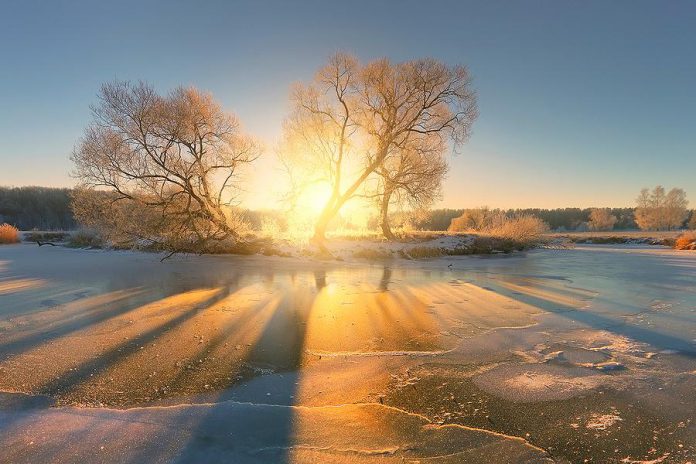
Pagan cultures in the northern hemisphere marked the winter solstice as the final day before the long winter by holding feast celebrations. Animals were slaughtered so they would not have to be fed during the winter, and wine and beer that was fermented during the year was ready for drinking.
Many of the traditions we now associate with Christmas have their roots in winter solstice celebrations. For example, the Celtic Druids used evergreen trees, holly, and mistletoe during winter solstice rituals.
What’s special about this year’s winter solstice?
This year’s winter solstice coincides with a full moon, which will peak at 12:49 p.m. EST on Saturday, December 22nd.
The December full moon is called the “Cold Moon” or the “Long Night Moon”, names that originate with Indigenous peoples of North America, who marked December’s full moon as the beginning of the coldest part of the year. Europeans called it “The Moon Before Yule” (an old northern European winter festival now associated with Christmas)
The last Cold Moon occurred in 2010 and the next one won’t happen until 2094.
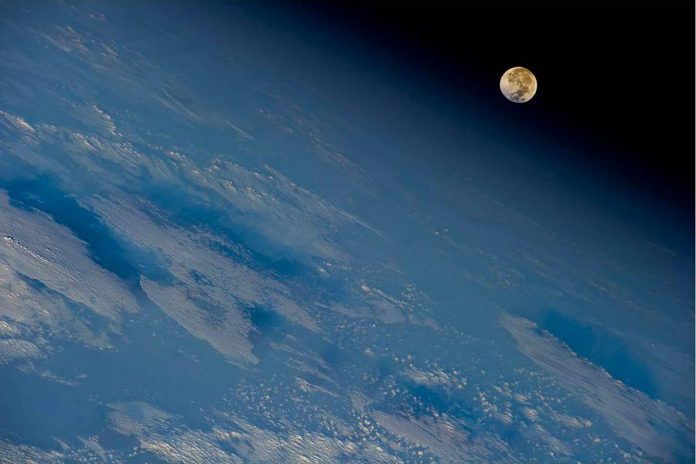
On the night of December 21st, Mercury and Jupiter will be in conjunction, and the Ursid meteor shower will peak on the night of December 22nd.
Unfortunately, the weather forecast is calling for a mix of sun and cloud over the weekend so you may not be able to see these astronomical events — even if you’re willing to brave the cold nighttime temperatures.
Interesting facts about the winter solstice
- The word solstice comes from the Latin word solstitium, which means “stationary sun”.
- The shadow you cast at noon on the winter solstice is the longest shadow you’ll cast all year.
- The Christmas carol In The Bleak Midwinter refers to the winter solstice in its title.
- Every year revellers gather at Stonehenge to watch the sunrise on the shortest day.
- The winter solstice happens on a different date each year (between December 21 and 23) because the Earth’s orbit around the sun is actually 365 days, five hours, and 45 seconds long.





